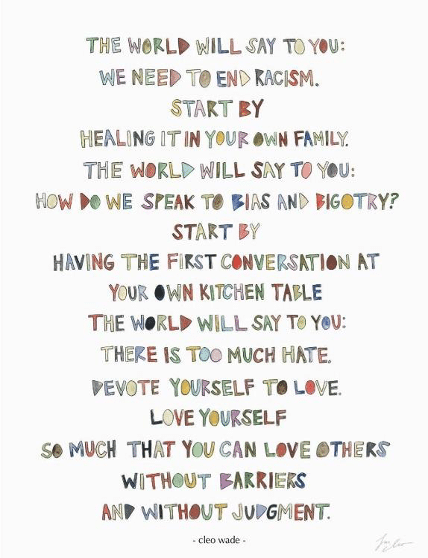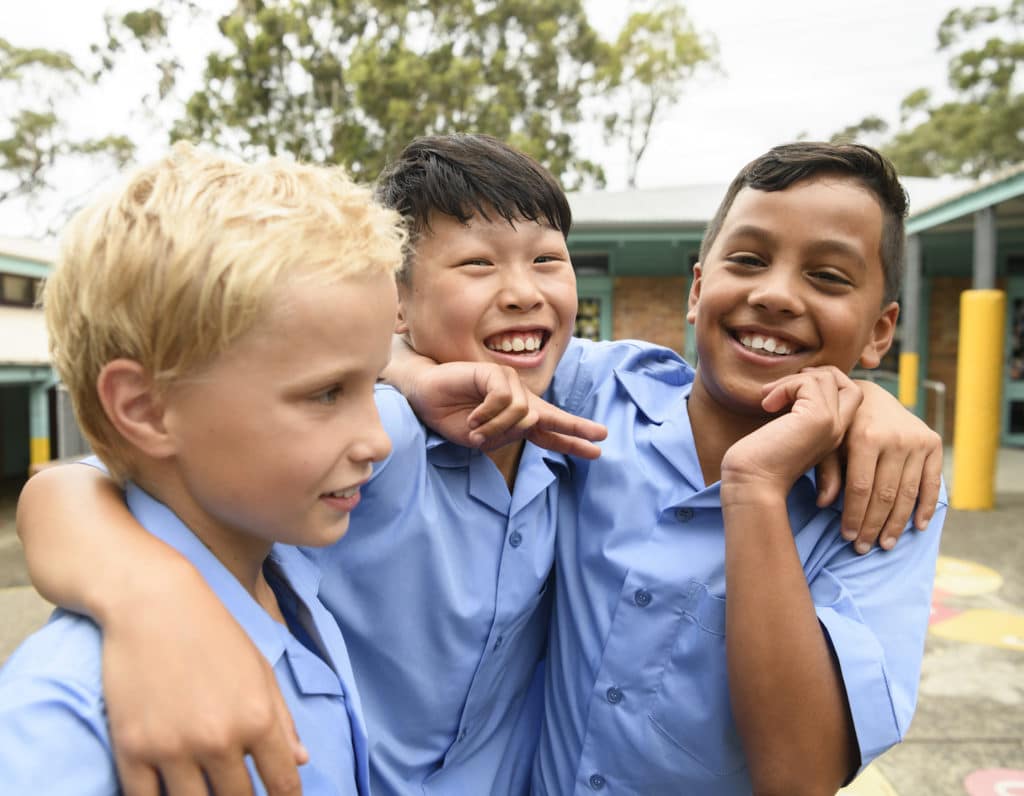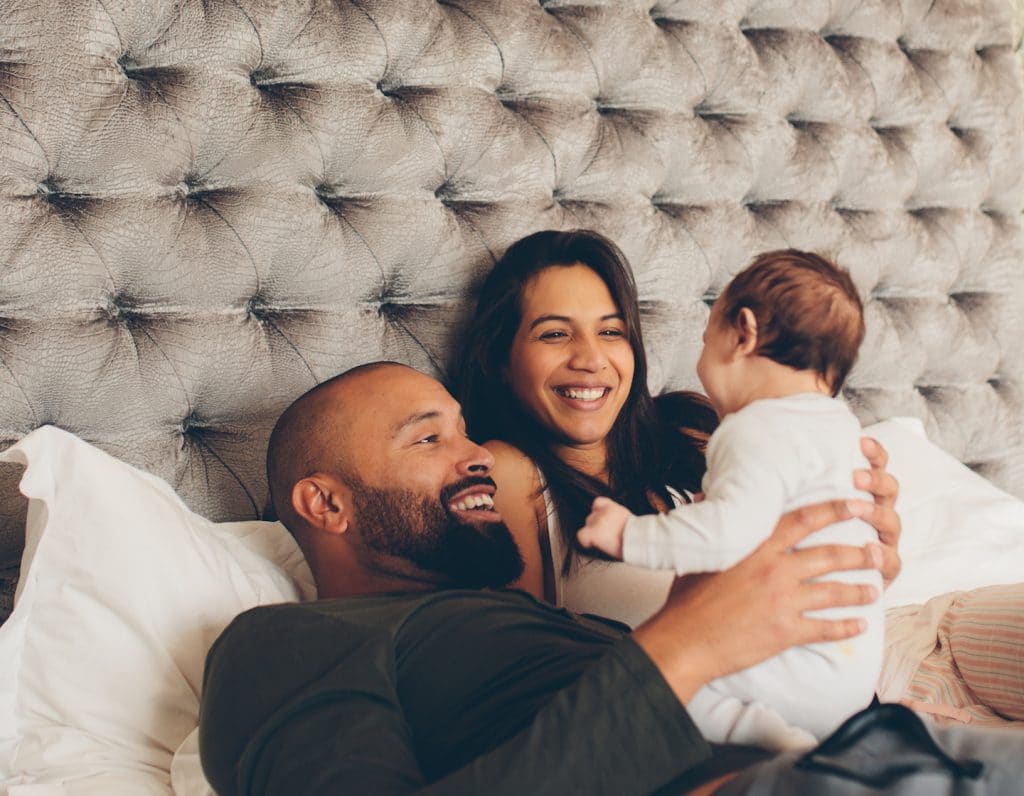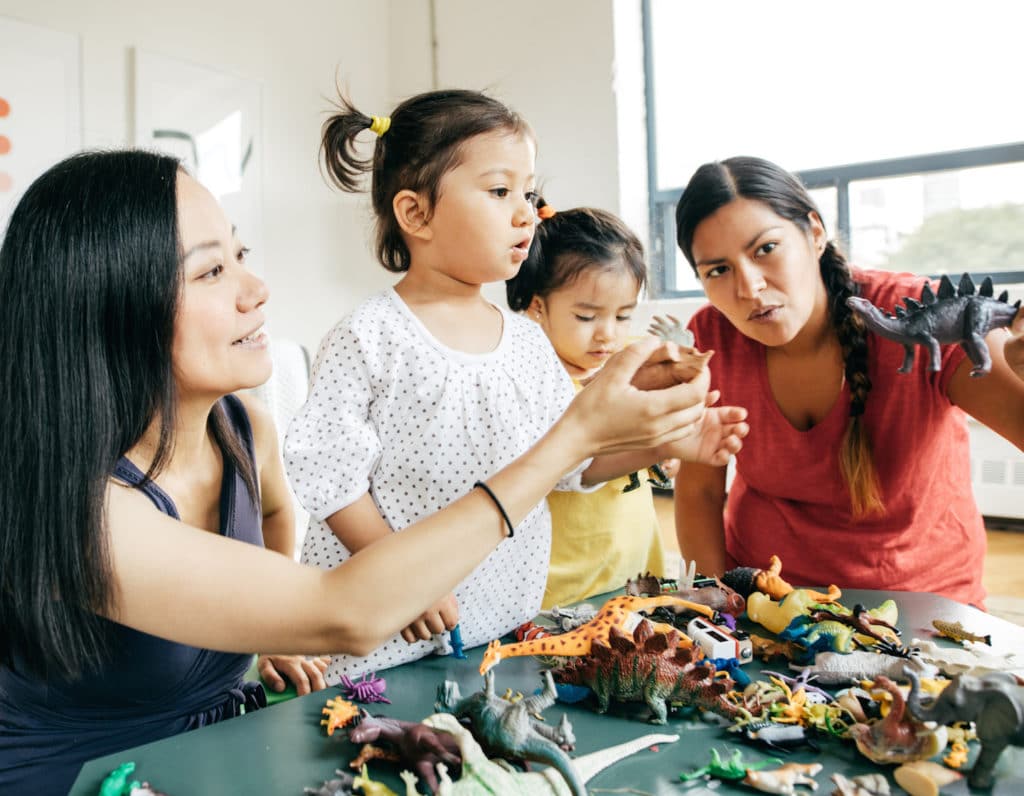

There is racism in Singapore just as there is everywhere else on Earth. Two mamas share their personal stories, and tips on how to talk about race with your kids
This is a two-part post in which two mamas share the experience they and their children had dealing with and talking about racism in Singapore. The first is an account from Singaporean mama Joline Lim reflecting on how she neglected to talk to her son about race. The second is from expat mama Imelda Bonnett, who moved from Australia to Singapore, and how she experienced the pain of seeing her 4-year-old daughter subjected to racist behaviour. Joline and Imelda are both admins for the Respectful/Mindful Parenting group affiliated with Chapter Zero Singapore, an invaluable online parenting resource (whose wisdom we very much appreciate here at Sassy Mama!). We encourage you to check out Chapter Zero’s Facebook page for countless resources and infographics relating to the topics of children and race.
Below, Joline and Imelda share their personal recommendations on how parents can raise race-conscious kids. They have also created an invaluable parent toolkit with resources and information to help support your journey to dismantling racism with the next generation. Click here to read it and find a wealth of resources including podcasts, children’s books, and in-person parent groups. We can all learn more, and we can all do better; this is a good place to start.
According to current research, a baby’s brain can notice race-based differences as early as six months old and can internalise racial bias by ages 2 to 4. By around age 12, children become set in their beliefs. With Singapore being a multi-racial society, it is important for children to start young when it comes to understanding diversity and inclusion, and recognise within themselves and others what racism looks and feels like.
How a Singaporean mama forgot to talk to her son about race
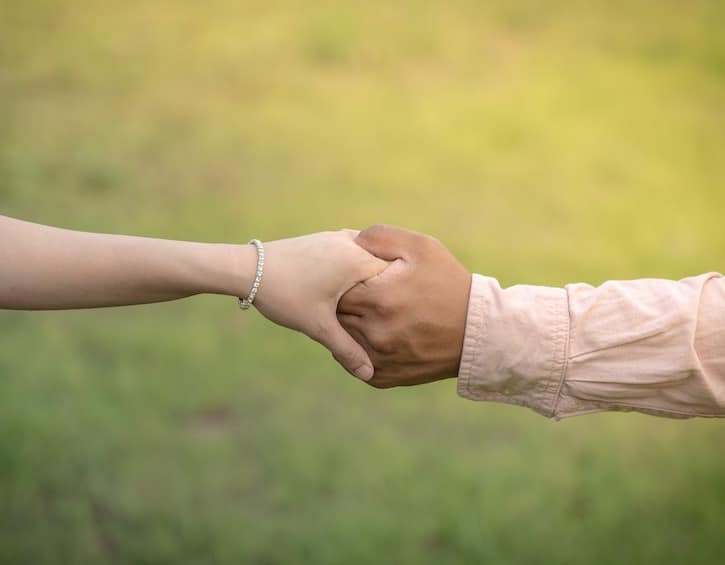

Singaporean mama Joline Lim:
This is a story about rojak and race.
My mother came home announcing that she had bought ‘rojak’ (a local salad dish) for lunch. My 4.5- year-old son overheard me asking her if it was the Chinese or Indian version.
He piped up with his innocent question, “What is Chinese or Indian?” It was a jaw-dropping moment for me, as I realised that I had never really talked to my son about race! After I recovered, I told him that our family was a mix of Chinese and Indian. I explained how my grandparents’ families came to Singapore from India and China, respectively. How my grandfather and grandmother grew up as neighbours, fell in love, and got married.
“Oh, so… which ‘rojak’ can we eat?” my son wondered aloud.
“We have the choice to eat anything,” I said, smiling while ruffling his hair.
I thought back to stories I had heard growing up. How my grandparents faced alienation for being a mixed-race couple. How my mother was blatantly bullied in school by a racist teacher who said that she was ‘dirty’ for having dark skin.
My childhood was spared of such cruelty, but receiving unwanted attention was still uncomfortable for a young child. When my grandfather and I took our evening walks to the neighbourhood shops, people would gawk at the scene of a tall, dark-skinned man holding the hand of a little, fair-skinned girl. Occasionally a curious shopkeeper might remark, “Good ah – your granddaughter so fair.”
I decided to start telling my son these stories. Pointing to the wedding photo of my grandparents that was on the mantle, I began. I talked about how mixed-race marriages used to be rare and frowned upon. That Singapore now has a great mix of people of different races and nationalities, with much less resistance to anyone befriending or marrying someone outside of their group.
My son nodded as he ate and listened. The significance of what I had shared with him yet to sink in.
Privileged in Singapore
Weeks later, while we were having lunch in the comfort of our home, over 20,000 migrant workers were being quarantined due to the rapid spreading of Covid-19 infections. Every day, there were reports of hundreds of migrant workers falling victim to the virus. The situation shone a spotlight on the workers’ plight of having to deal with cramped and poorly managed living conditions. It was impossible for the practice of social distancing in such cramped lodging, so the government had to house them in unused spaces like event halls, floating “hotels” and even a cruise ship.
While I was heartened by the actions of many Singaporeans who came together to provide help and support to the migrant workers in need, I was appalled at the extent of resentment, and lack of empathy that I witnessed by the people around me and online. There was a tremendous sense of ‘othering.’ It felt as if this crisis that was occurring in our backyard was happening in another country altogether.
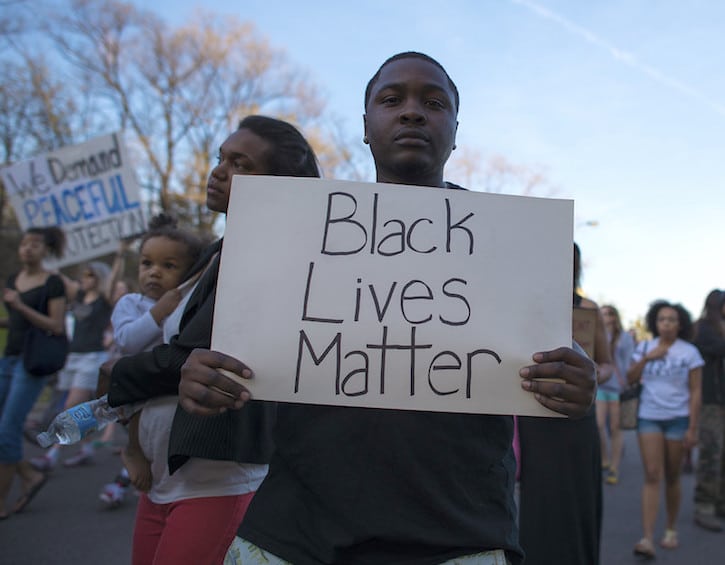

In May 2020, news came from America that struck a nerve with people across the world. I was with my son in the living room when the evening news on the television reported that a police officer had continued to kneel on a handcuffed man on the street despite being told by the man that he could not breathe, till the man had stopped breathing and died.
In shock, my son asked, “Why did the police officer do that, Mummy? They are supposed to protect people, not kill people…”
I replied defeatedly, “Honestly, I don’t know why the police officer did such a horrible thing.”
Then he asked me the question that really hit me hard, “Is it because he’s black like your grandpa?”
Dismantling racism together with our kids
Children notice everything on a conscious and subconscious level, as they are trying to make sense of the world they live in. They see a pattern of behaviour, and in their mind, they form the belief that because this is how the world works, that this is the way it should be.
While I am incredibly grateful that Singapore is one of the safest and wealthiest countries in the world, I realise that even a mixed-race person like me became complacent in my peaceful bubble.
It is too easy to turn a blind eye to covert issues of othering, microaggressions, casual racism, or even blatant discriminatory acts, especially if it does not directly affect you. As parents, it is our responsibility to educate and raise awareness of racial and discriminatory issues with our children, so that they do not grow up thinking this is an acceptable way of life.
If the thought of tackling such deep-rooted issues may seem difficult and overwhelming, you may find comfort and empowerment in these words by American activist, Cleo Wade:
Here are some action points that I have committed myself to so as to help my children learn about race and racism:
- Be the change you want to see. We are going to be our children’s first resource. Commit to unlearning biased views and educate yourself.
- Actions speak louder than words. Children pick up social cues from their parents. So pay attention to your body language, tone of voice, and language in your interactions with different people in your day to day.
- Normalise diversity and differences: When your children see you spending time with a diverse group of friends, it normalises diversity. I also like to talk to my son about what makes each person unique and different. I usually use the example of his close friends, pointing out how I noticed they have different preferences from my son. The intention of this conversation is to normalise that each person is different.
Ultimately, the goal is to develop a sense of empathy in our children. Once they recognise that every person is unique but we all have needs and feelings, it sets the groundwork for building compassion and understanding. Together, we can raise race-conscious kids and dismantle racism, one conversation at a time.
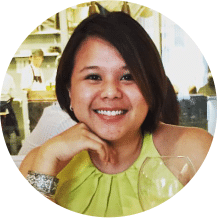

A Singapore expat mom’s painful experience with racism
Expat mama Imelda Bonnett from Australia:
My daughter, B, was around 4 years old, playing with one of her best friends. It was a beautiful day and their laughter filled the house with warmth and liveliness. I was supervising and smiling at their sweetness with each other, when her friend declared, “You have brown skin, that’s dirty.” Time slowed as I watched my daughter’s face fall, the happy glimmer in her eyes vanish, replaced by welled up tears. Crestfallen and dejected, she began to sob. My heart broke.
It was neither the first nor the last difficult experience in B’s young life; experiences that are painful to watch as a mother. Over the years in both Australia (where she was born), and more recently in Singapore (where we now live), there have been other children who called her a “monkey”, pointed at her skin or curly hair, or simply chose not to play with her because of her appearance as a mixed race child. No child should ever be made to feel like they are less because of their appearance, or the colour of their skin. In fact, no person should ever be made to feel that way. It is unfair. Yet, this is the reality for minority children and people of colour (examples from US, Australia and Singapore; a 2010 study involving 133 children also showed that children are biased towards lighter skin).
The death of George Floyd, an African American man in the custody of a white policeman in Minneapolis USA, and a number of other events, triggered a series of protests that revealed a desperate, oppressed minority who are seeking justice, and who are tired of being treated differently because of their race.
Whilst the situation in the US is complex with a long history of slavery and persecution of African Americans, we would be naïve to think that racism and colourism (discrimination towards darker-skinned individuals) does not exist everywhere else, including Singapore.
Ask yourself if you would switch places with African Americans in America, or with Indigenous Australians in Australia, or with Indians in Singapore? I wouldn’t. And if not, why not? Why is it okay? What can we learn from it and how can humanity move forward towards a peaceful and harmonious existence? Many experts say we can start by raising race conscious children to do their small part to tackle racism and promote respect, diversity and inclusion.
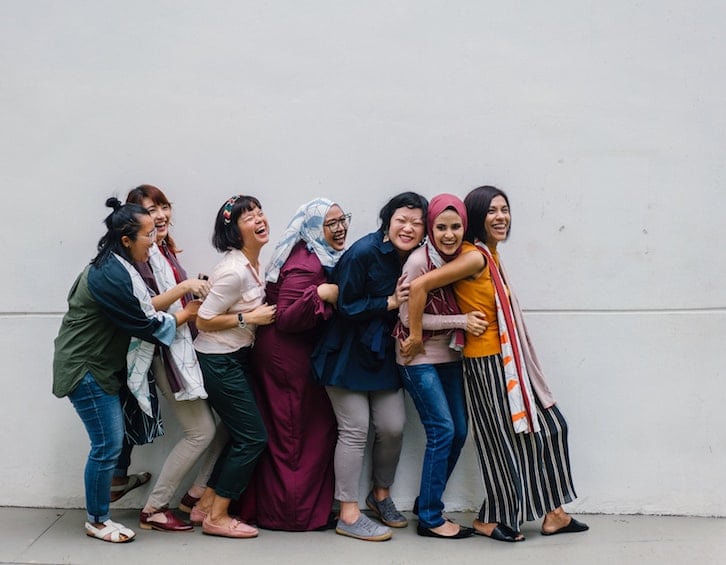
Step 1: Talk to your children about people with different skin colours, cultures and religions.
My daughter’s friend’s mum was understandably mortified when I told her about what her daughter said. Like many, she assumed that because her daughter was friends with children of colour, that she did not have to explicitly talk about it.
Talking about differences will help children create more positive attitudes about people who are different from them, and the absence of such discussions could lead a child to draw their own conclusions or take on the (often undesirable) views of others, as they get information and understanding from other places. Based on a Study in Social Psychology and Personality Science, children learn that race is a category, even when parents try to teach them not to recognise race.
It’s important not to have just one conversation, but a series of conversations; and start sooner than later, tailoring your message so that it’s age- and child-appropriate. If they happen to ask you about something related to the topic, help them explore their curiosity and respond in a matter-of-fact, non-judgmental way.
A child in Singapore once pointed at my husband and said, with wide-eyes, “Look at his skin, he’s black!” Her parents quickly shushed her and apologised to him. My husband (who is used to these types of interactions by now), calmly said, “No need to apologise to me, educate your child.” At which point they turned to their child and chastised her, taking out their embarrassment and shame on the poor child. They were a family of colour (though much paler than my husband), which is another example that all of us, even minorities, have biases about skin colour (Bozo, J., Revels-Macalinao, M. & Huynh, V. Examining Skin Color and Discrimination Among Ethnic Minority Adolescents. Race Soc Probl 10, 320–331 (2018)).
Perhaps a better way to ensure that your child knows it’s ok to talk about these things is to say, “Yes, he has dark skin, it means his skin produces more melanin,” [it is not racist to notice skin colour] “But we shouldn’t point at people as it can make them uncomfortable. Maybe we can go over and say hello instead.”
If they don’t bring it up first, you should still try to bring up the subject. Don’t be scared that you are putting ideas into their minds or making them racist, young children can already notice differences and they are not colour-blind. To say that you don’t see colour means that you are turning a blind eye to the bias, racism, and prejudices that people of colour experience as a result of the colour of their skin. Here is an article on why it’s not such a good idea to ignore the conversation. Even six-month-old babies notice differences like skin colour and hair, and Professor Kang Lee at the University of Toronto’s research revealed that they already show signs of racial bias. Just try not to perpetuate negative stereotypes or repeat any derogatory terms that they might not have heard yet.
The best place to begin is to talk about the people who are already in the child’s life who have different skin colour, culture or religion. If they don’t know anyone who is different from them then it’s time (for you and them) to make new friends! Appeal to the child’s sense of fairness and justice (according to the University of Queensland, children as young as 7 are able to grasp the concept). For example, ask the child if it’s ok for X (the person they know) to be treated poorly, or rewarded less than others, just because of their appearance?
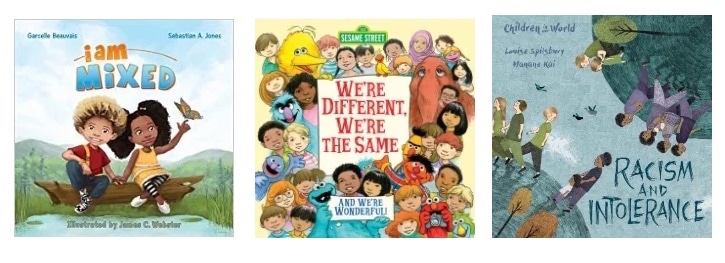

Step 2: Expand your library to include books that celebrate diversity
Read more: 5 Great Childrens’ Books on Being a Mixed Race Family
This is also another good way to start discussions around racism and discrimination. A friend’s child asked her mother, “Why do some people not like black people?” after reading a story about Rosa Parks. She fumbled through it and later asked how she should have responded (by the way, it’s ok to ask for help, we are all learning!). There are many good ways to respond of course, and one of them could be to say that yes, you have noticed that too, and that it’s called racism.
“Racism is when people treat others badly because of their skin colour or where their parents or grandparents are from. It’s ridiculous isn’t it? And racism is not just about people being mean to each other, back then in the US, black people like Rosa were segregated from white people and could not do a lot of things that white people could. That’s why she did what she did. What do you think about that?”
Finally, it is ok to make mistakes. As with everything, it takes practice. The main thing is you tried your best and that although it’s difficult, this is important.
Disclaimer: This is my perspective as the mother of a mixed-race child and the wife of a black man. My aim is to raise awareness and not replace or represent the voices of others that are just as valid but may be under-represented. If I have caused any offence, I apologise and invite you to help me learn and do better.


Thank you so much, Joline and Imelda, for sharing your time and personal experience. Follow Chapter Zero Singapore for more resources on respectful and mindful parenting, and talking to kids about race and racism!






 View All
View All





 View All
View All








 View All
View All



